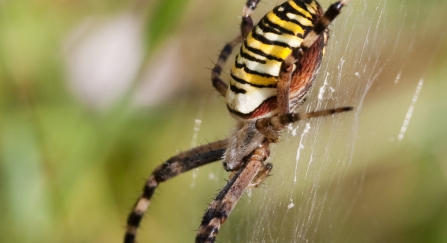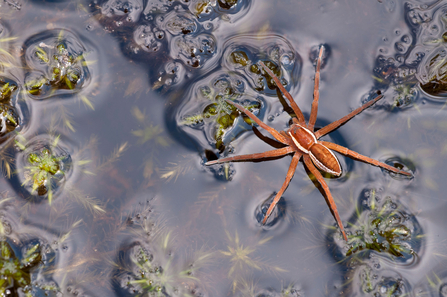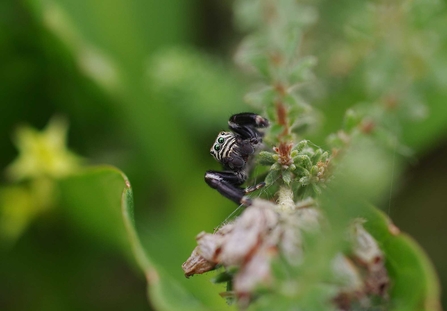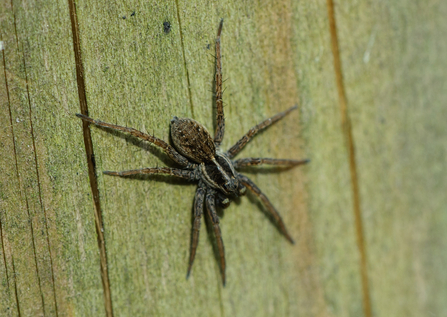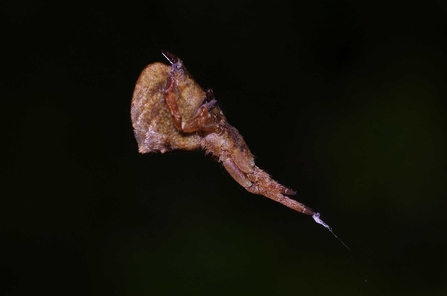You can’t help but admire the wheel-like webs of the orb-weavers, bejewelled with droplets of dew on an autumn morning. Bluish coloured silk webs around entrances to holes and crevices are the work of lace webbed spiders (also known as lace weavers). And as the temperature drops, male house spiders become more active as they search for mates. Don’t worry, they’re absolutely harmless!
But who knew that Surrey is a hotspot for spectacularly scary spiders? It’s perhaps not the best news for arachnophobes, but spiders are fascinating creatures.
Surrey is a really important county for spiders, with more than 400 species recorded – and we believe that some rare species of spider can now only be found here in the county.
Love them or hate them, spiders play a critical role in our ecosystems, as prey and predator. Surrey offers some of the best places for them to live and thrive. Heathlands such as Chobham Common are home to large numbers of different spiders – it’s recognised as nationally important for some species. Older grasslands and woodlands are also good hunting grounds for spider spotters.
Only a few species have common names, such as the indoors daddy long-legs and large house spiders, and outdoors the cross or plain garden spider. Another species often seen around houses is the wine-red woodlouse spider, which has exceptionally large jaws to penetrate the segmented armour of its chief prey, woodlice. The endearing jumping spiders are invariably tiny but have excellent all-round vision, matchless athleticism and may be found in both urban and natural habitats. The black-and-white striped zebra spider is perhaps the best known, while the striking bowed or gorilla jumper is locally found on damp heaths such as Whitmoor and Wisley Commons.


